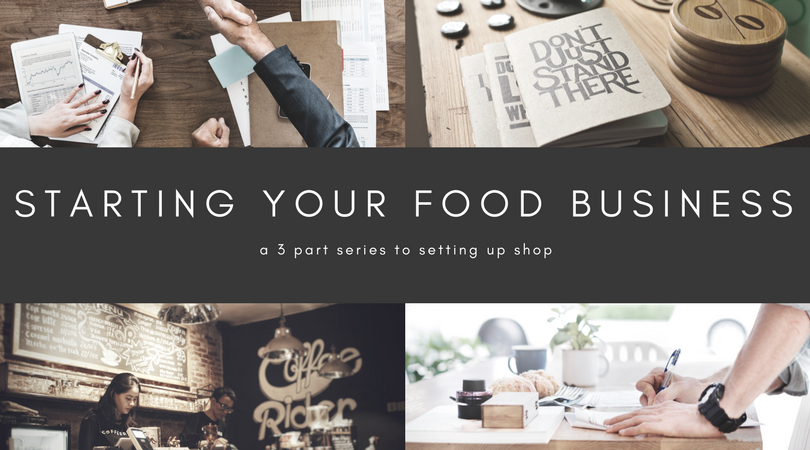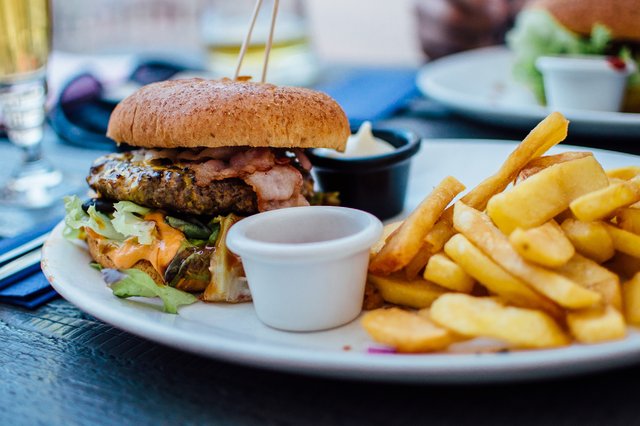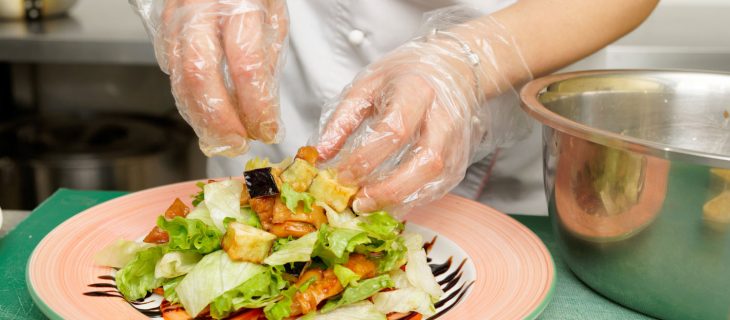What you need to know BEFORE STARTING A SMALL FOOD BUSINESS│Intro

Congratulations! You've decided to follow your entrepreneurship dreams and start a food business. So you're keen to cash in on those delicious cupcakes your friends and family love so much but question is, where do you start first?
Well you've come to right place. In this 3 part series, the basics of what you need to know before starting a food business will be covered so you can jump straight to making money like a boss. This first post will provide an introduction to food businesses before heading on to:
- Part 1: Approvals and design
- Part 2: Food safety
- Part 3: Satisfied customers
Food Business

By definition, a Food Business includes the handling of food intended for sale or the sale of food. The most common food business outlets include:
- Fixed: physical building or location (e.g. cafes and restaurants)
- Mobile: food trailers or vans and ice-cream trucks
- Home occupation: low-risk cooking activity in a residential kitchen
- Temporary: food stall (e.g. events or markets)
- Food transportation: transporting food (e.g. transporting ingredients to clients)
- Commercial kitchen: partially utilising (e.g. pre-arrangement with main leasee) a fixed building (e.g. medium-risk cooking activity upgrading to operate from a commercial kitchen)
Pick a starting point, from where you want to begin. You can always upgrade to a bigger kitchen if you start small but starting too big too fast can mean paying a hefty rental whilst still trying to establish a client base.
Research

Like anything you're going to invest in, spend the time to do market research. It'll pay off in the long run to know your potential customers.
- Location: is there another already similar food type within 500 metres? Competition is healthy, it provides customers with choice, but existing businesses in the area may already have their loyal customers.
- Uniqueness: something new is always on trend but after the craze ends, will your customers resort back to tastes they are familiar with?
- Oversaturated market: if you're about to set up another Cafe, ask yourself how you'll stand out from the crowd to draw customers. Is it your amazing coffee? Awesome location? A big breakfast to die for? Well priced?
- Suppliers: Can you source most if not all your ingredients locally? Have back up suppliers just in case.
Insurance
Along with the usual cover, this should also at include public liability, product loss, damage and theft.
Food Business Registration
Often, people will confuse this registration with the registration of their business with the Australian Securities and Investments otherwise known as ASIC. A food business is registered with the local authority (i.e. local government) or the state government depending on the nature of the food business. For informational purposes, we will be discussing approvals from local government in detail in the next chapter.
Risk rating - classification of food business

Food businesses are categorised into 4 risk rating classifications: very low, low, medium or high. The assigned risk classification of a food business will be dependent on a variety of factors such as: food type, food handling activities conducted at the premises, transportation of foods, processing methods and customer base. Food service to child care centres or aged care facilities inherently involve more risk due to supply to vulnerable persons and are therefore deemed to be classified as a high risk food businesses. These are a few examples of the different types of categories:
- Very low: Newsagencies, bottleshops, Kmart, Red Dot, The Reject Store, pharmacies. These commonly sell pre-packaged lollies, drinks, chips, biscuits etc. however do not directly repackage food or handle unpackaged food directly.
- Low: Microbreweries, home occupations, service station (selling packaged food in hot/cold display cabinets), green grocers (selling whole fruit/veges), coffee van, icecream van etc.
- Medium: cafes, restaurants, supermarkets with delis, food truck, take-away food outlets, bakery etc.
- High: child care facilities, aged care facilities etc.
Food type - risk categories

Foods can be categorised into 3 categories based on the level of risk to support pathogenic microorganism growth. Below are a few examples of foods categorised into their level of risk:
- Low-risk food: food that is unlikely to contain pathogenic microorganisms and will not normally support their growth due to food characteristics. Examples are grains and cereals, bread, carbonated beverages, sugar-based confectionery, alcohol and fats and oils.
- Medium-risk food: food that may contain pathogenic microorganisms but will not normally support their growth due to food characteristics; or food that is unlikely to contain pathogenic microorganisms due to food type or processing but may support formation of toxins or growth of pathogenic microorganisms. Examples are fruits and vegetables, orange juice, canned meats, pasteurised milk, dairy products, ice cream, peanut butter and milkbased confectionery.
- High-risk food: food that may contain pathogenic microorganisms and will support formation of toxins or growth of pathogenic microorganisms. Examples are raw meat, fish, oysters, poultry and milk. Other examples include tofu, fresh filled pasta, meat pies, frankfurts, salami, cooked rice and lasagne (these foods pose a particularly high risk if they are not processed or cooked adequately).
Source: ANZFA Food Safety: The priority classification system for food businesses
It is important to determine the risk of the final product (intended use by customer) as the food business can then identify hazards that are likely to be present during food processing to prevent contamination. Foods that are determined to be potentially hazardous foods (PHF) will require temperature control. Ready-to-eat foods (RTE) can be at greater risk for microbial contamination as these may be consumed by the customer without the need for further heat processing. Further detail will be provided in part 2 Food Safety on recognising how food type is critical for safe food practices.
If you found this post useful, don't forget to add me @tatk and stay tuned for more Thoughts According to Kay in my upcoming posts!
UPCOMING POST │ Part 1 - Approvals and Design for Small Food Businesses
Disclaimer: @tatc does not provide tax, legal, business, professional, commercial or accounting advice. This material has been prepared for informational purposes only, and is not intended to provide, and should not be relied on for, tax, legal, business, professional, commercial or accounting advice. You should consult your own advisors before engaging in any transaction or making a decision based on this information.
@tatk Very good tips and informative for new starters. Keep up the post! You deserve an upvote and follow! :)
Landscaping transforms outdoor spaces into vibrant, functional areas, enhancing both beauty and utility. Effective Landscaping involves planning and designing elements such as plants, paths, and structures to create a cohesive and appealing environment. It not only improves the aesthetic appeal but also adds value to the property. Whether for residential or commercial spaces, thoughtful landscaping can turn ordinary yards into inviting retreats, providing relaxation and enjoyment while reflecting personal style.